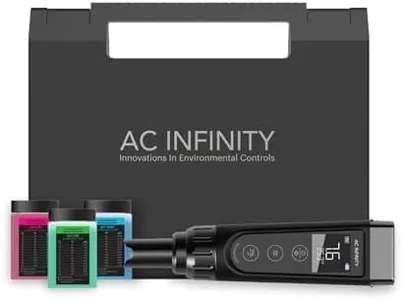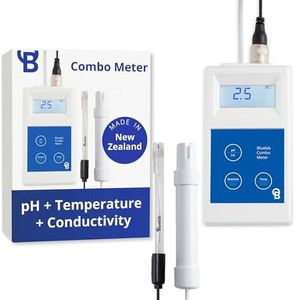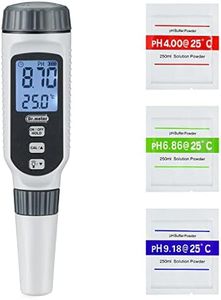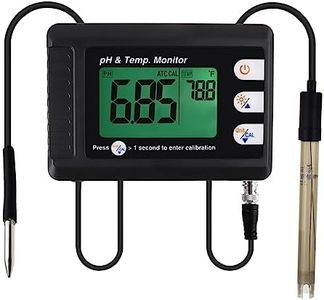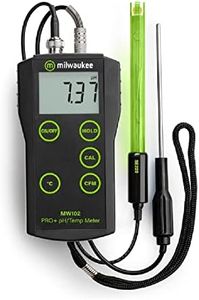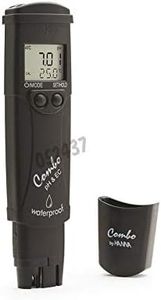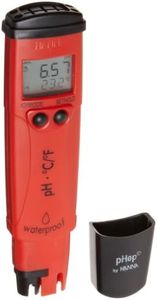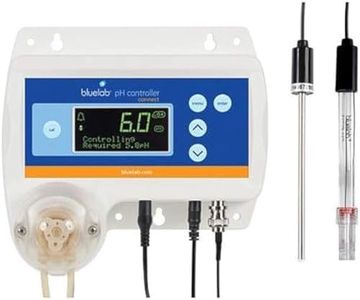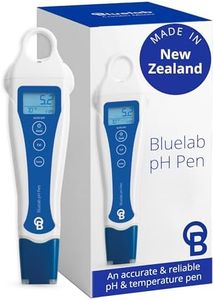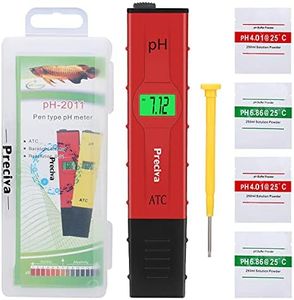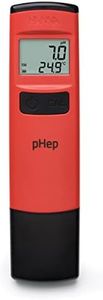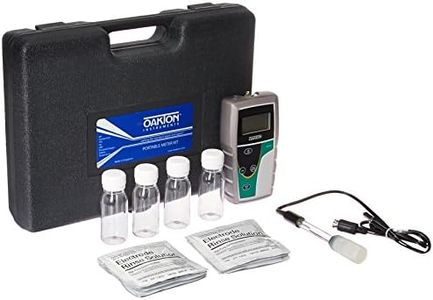Buying Guide for the Best Ph Meters
Choosing the right pH meter is essential for accurately measuring the acidity or alkalinity of a solution. Whether you're a hobbyist gardener, a professional in a laboratory, or someone who needs to monitor water quality, understanding the key specifications of pH meters will help you make an informed decision. Here are the main factors to consider when selecting a pH meter.AccuracyAccuracy refers to how close the pH meter's readings are to the true pH value of the solution. This is crucial because precise measurements are necessary for reliable results. Accuracy is usually expressed in pH units, such as ±0.01 pH. For general use, an accuracy of ±0.1 pH is often sufficient, but for scientific or industrial applications, you may need a meter with higher accuracy, such as ±0.01 pH. Consider your specific needs and choose a meter that provides the level of accuracy required for your tasks.
ResolutionResolution is the smallest change in pH that the meter can detect and display. It is important because it determines the level of detail in your measurements. Resolution is typically expressed in pH units, such as 0.1 pH or 0.01 pH. For basic applications like gardening or pool maintenance, a resolution of 0.1 pH is usually adequate. However, for more precise work in laboratories or research, a resolution of 0.01 pH or better may be necessary. Choose a resolution that matches the precision required for your measurements.
CalibrationCalibration is the process of setting the pH meter to known pH values to ensure accurate readings. This is important because pH meters can drift over time and need regular calibration to maintain accuracy. Some meters require manual calibration using calibration solutions, while others offer automatic calibration. Manual calibration can be more time-consuming but allows for greater control, while automatic calibration is quicker and more convenient. Consider how often you will need to calibrate your meter and choose one that fits your preference for ease of use.
Temperature CompensationTemperature compensation adjusts the pH reading based on the temperature of the solution, as pH can vary with temperature. This feature is important for accurate measurements in varying temperature conditions. Some pH meters have automatic temperature compensation (ATC), which adjusts the readings automatically, while others require manual input of the temperature. If you are working in environments where temperature fluctuates, a meter with ATC is highly recommended. Choose a meter with temperature compensation if you need consistent accuracy across different temperatures.
Electrode TypeThe electrode is the part of the pH meter that comes into contact with the solution and measures its pH. Different types of electrodes are suited for different applications. Glass electrodes are common and suitable for most general purposes, while specialized electrodes, such as those for soil or food, are designed for specific types of samples. Consider the type of solutions you will be measuring and choose an electrode that is appropriate for your needs. If you need to measure pH in a variety of samples, look for a meter with interchangeable electrodes.
PortabilityPortability refers to how easy it is to carry and use the pH meter in different locations. This is important if you need to take measurements in the field or move between different sites. Portable pH meters are typically smaller, battery-operated, and designed for easy transport. Benchtop meters are larger and more suitable for stationary use in laboratories. Consider where you will be using the pH meter and choose one that fits your mobility needs. If you need to take measurements on the go, a portable meter is the best choice.
DisplayThe display shows the pH readings and other relevant information. A clear and easy-to-read display is important for quickly and accurately interpreting the results. Displays can range from simple digital readouts to more advanced screens with backlighting and multiple data points. If you need to read measurements in low-light conditions or require additional information like temperature, choose a meter with a more advanced display. For basic use, a simple digital display may be sufficient.


